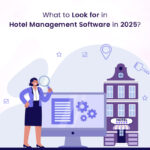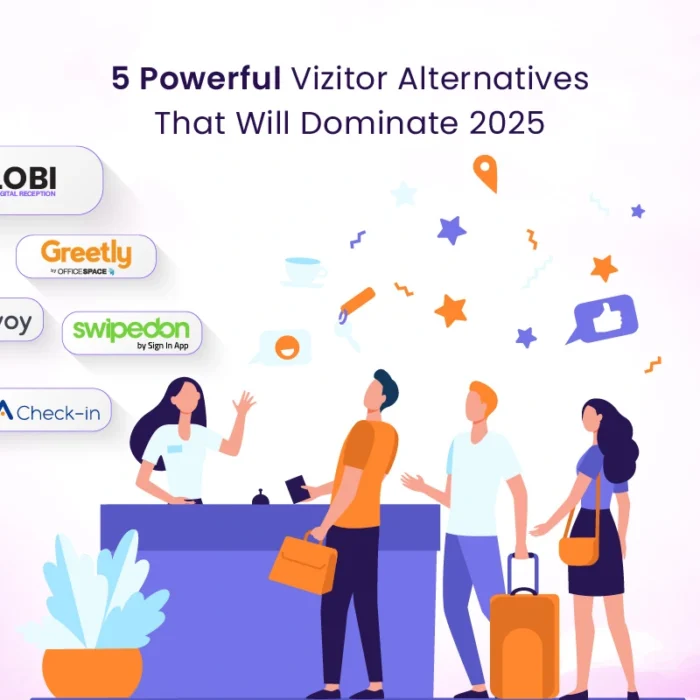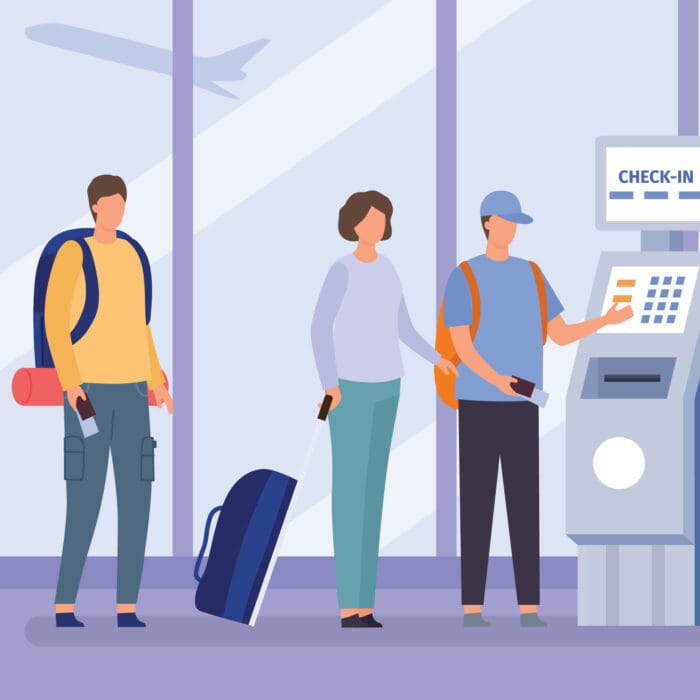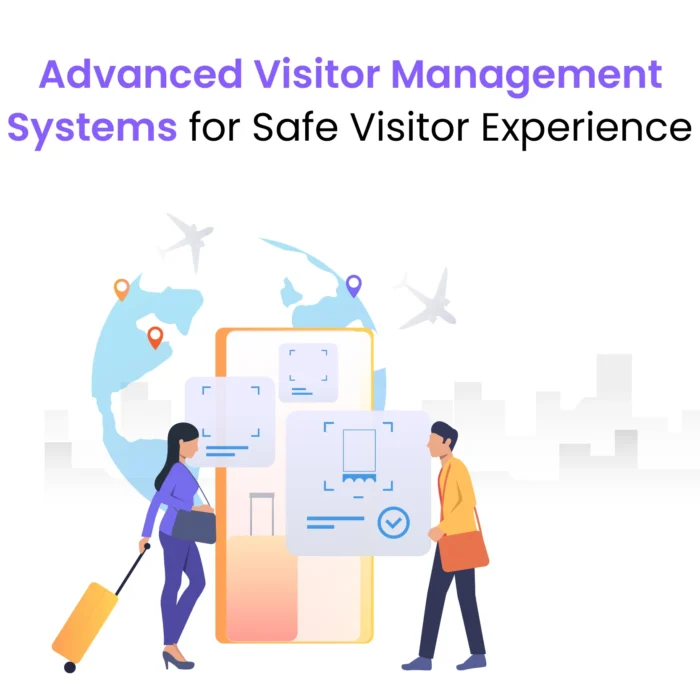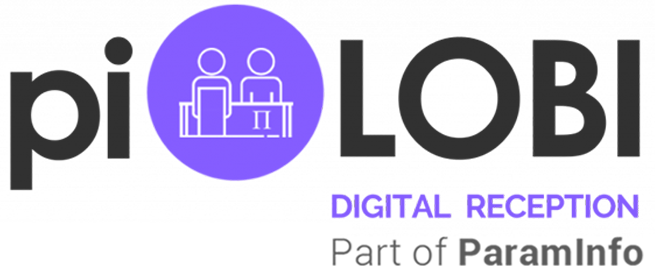
Why 2025 Belongs to Cloud Visitor Management Systems?
In 2025, the majority of companies will face new challenges in terms of security, compliance, and workplace efficiency. Starting from corporate companies, hospitals, schools, and hotels, every facility deals with a constant flow of visitors, delivery staff, and employees.
Traditional or any manual logbooks no longer provide the flexibility or real-time updates as required by modern businesses. This is where cloud-based visitor management systems come into action.
What Is a Cloud-based Visitor Management System?
A cloud-based visitor management system allows businesses to track visitors in real-time, handle check-ins without physical contact, and manage data in a way that grows with their needs. It gives control and makes it easier to handle higher numbers of visitors at your location.
This type of system helps companies streamline their processes and strengthen their security. It reduces IT expenses, offers centralized management of visitor activity across different sites, and updates. Managing facilities becomes more straightforward and less stressful with these features.
These systems also help meet industry rules and provide quick access to important information, which makes it simpler to adapt and respond when needed. They work with tools you may already use, like HR software or emergency systems. This leads to everything running smoothly.
Using a cloud-based VMS is a wise move to improve security and streamline operations in organizations.
This blog goes into why choosing cloud-based visitor management systems makes sense in 2025, what they offer, and how they fit changing workplace demands.
Why Cloud-Base VMS is the Future of Visitor Management?
By 2025, digital transformation will become essential rather than optional. Businesses will need tools that offer security, scalability, cost savings, and flexibility to meet shifting demands. Older strategies will fail to deliver on performance, compliance, and usability.
This is where cloud-based visitor management systems will work as an alternative that makes more sense. They integrate, improve security, and reduce expenses over time, helping companies prepare for the future. Below are more reasons showing why businesses should use cloud-based visitor management systems today.
1. Enhanced Security with Visitor Checks in Real Time
As security threats change over time, cloud-based visitor management systems improve to tackle new risks. Real-time visitor checks, automated ID checks, and customizable security setups help ensure your system stays in line with modern security methods. When using an on-premises system, your organization takes on the job of keeping the system updated and secure, which can put a lot of pressure on your IT team.
Managing an on-premises system’s updates often requires manual effort, which can lead to mistakes and unnecessary hassle. Cloud-based management systems handle those updates automatically through the provider, helping reduce stress on your IT team while giving you added confidence in your system.
2. A Flexible Option to Support Growing Businesses
Using a cloud-based visitor management system works great if your company is growing. Scaling up is easier compared to old on-site systems, which often lag when businesses expand. On-premises systems need frequent hardware upgrades, more IT work, and higher costs to keep them running. cloud-based visitor management systems avoid these issues by growing with your business, so visitor management stays smooth and hassle-free.
If you run one office or have locations spread worldwide, cloud platforms let you see visitor data from anywhere. Managing several locations gets easier and more organized. Companies can keep things consistent and follow rules no matter where they’re located.
3. Contact-Free and Secure Visitor Check-Ins
After the pandemic, safety and cleanliness matter more to businesses than ever. Touchless check-ins are no longer just handy; people now expect them. Employees and visitors, including business partners, like smooth entry systems that help them save time and lower health concerns.
A Visitor Management System running on the cloud supports this by using modern, touch-free tech. It guarantees an easy and safe process for every visitor.
QR code check-ins let guests pre-register and enter without needing physical contact. Digital visitor passes replace paper badges, cutting down on waste and avoiding unnecessary touch points. Workplaces with heavy visitor traffic can use self-service kiosks to let people check in on their own while following social distancing rules. Facial recognition adds more security, speeds up identification, and improves the visitor experience overall.
4. Easy-to-Use GDPR-Compliant Visitor Logs
To run in regulated industries, organizations must stick to compliance rules without exception. Laws like GDPR in Europe, HIPAA in healthcare, and ITAR in defense demand that businesses manage visitor data while following tough privacy and security standards. Using a cloud-based visitor Management System helps by including compliance tools that lower risks and make monitoring easier.
Automated data retention settings let businesses set how long visitor records stay stored. This ensures they keep what is required. The system tracks every action taken, creating clear audit trails to report on and hold people accountable.
Industries like manufacturing, aerospace, government, and healthcare are turning to cloud-based VMS solutions to comply with regulations while improving visitor tracking, verifying identities, and protecting data. They bring these capabilities together in one secure platform.
5. Simple Integration With Modern Systems
A big benefit of cloud-based Visitor Management Systems is how they work with the tools you already use. Many modern VMS platforms use APIs and built-in integrations. This helps businesses link their visitor management tasks to their existing technology.
Linking up with HR software makes it easier to onboard employees, manage temporary staff, and handle contractor access. You can sync visitor pre-registrations with calendar tools so hosts get notified and ready before guests arrive. Emergency notification systems let companies track all visitors on-site during evacuations or critical events. Security gets a boost when VMS connects to custom or third-party watchlists, as it flags and blocks access for risky individuals.
These smooth integrations turn VMS into a central tool to improve how workplaces run, keep things safer, and help teams work together better.
6. Understanding Useful Visitor Data
A cloud-based visitor management system does more than make check-ins smooth. It provides detailed, data-based insights that businesses can use. By studying details like busy visitor times, frequent guest visits, which departments see more visitors, and even identifying risks or trends, companies gather meaningful information to act on.
This kind of knowledge helps them plan resources, organize spaces better, and strengthen security measures. It ensures that handling visitors becomes part of boosting efficiency and creating safer workplaces.
7. Keeping an Eye on Workplaces from Anywhere
As hybrid and distributed work setups grow in 2025, facility managers rely on tools to monitor and manage spaces from any location. Cloud-based visitor management systems help them do this by offering live updates of visitor activity on mobile dashboards, sending instant alerts to hosts, and providing emergency notifications through the cloud.
This remote access, boosts safety, speeds up responses, and makes it easier for teams to work together. It gives businesses the adaptability and strength they need to handle the changing demands of modern workplaces.
Industry Applications of Cloud Visitor Management in 2025
Different industries are finding value in cloud visitor management systems in unique ways. Let’s look at how they are using them in 2025:
- Hospitals and Healthcare – They focus on protecting patients, tracking contractors better, speeding up check-ins, and meeting HIPAA rules without fail.
- Corporate Offices – They aim to strengthen building security, improve the guest welcome process, manage hybrid workforces, and organize lobby operations well.
- Schools and Universities – They use these systems to stop unauthorized access, handle student and parent visits, and make their campuses safer overall.
- Manufacturing Plants – They rely on real-time contractor tracking, enforce safety rules, keep automated logs of visitors, and create fast evacuation records when emergencies happen.
- Government and Public Sector – Keep visitor logs secure and auditable, improve monitoring of critical facilities, and strengthen defenses against possible risks.
A Final Thought
By 2025, a cloud-based visitor management system will not just be convenient anymore. It will serve as a key part of workplace safety and operational effectiveness. These systems bring real-time tracking, easy integration options, touchless experiences, and GDPR compliance. Traditional systems cannot offer these kinds of benefits.
If your workplace still relies on old-fashioned registers or outdated on-site software, now is the perfect time to upgrade. Choosing a smart cloud-based solution will protect your workspace and help your operations stay flexible, future-driven, and within compliance standards.


